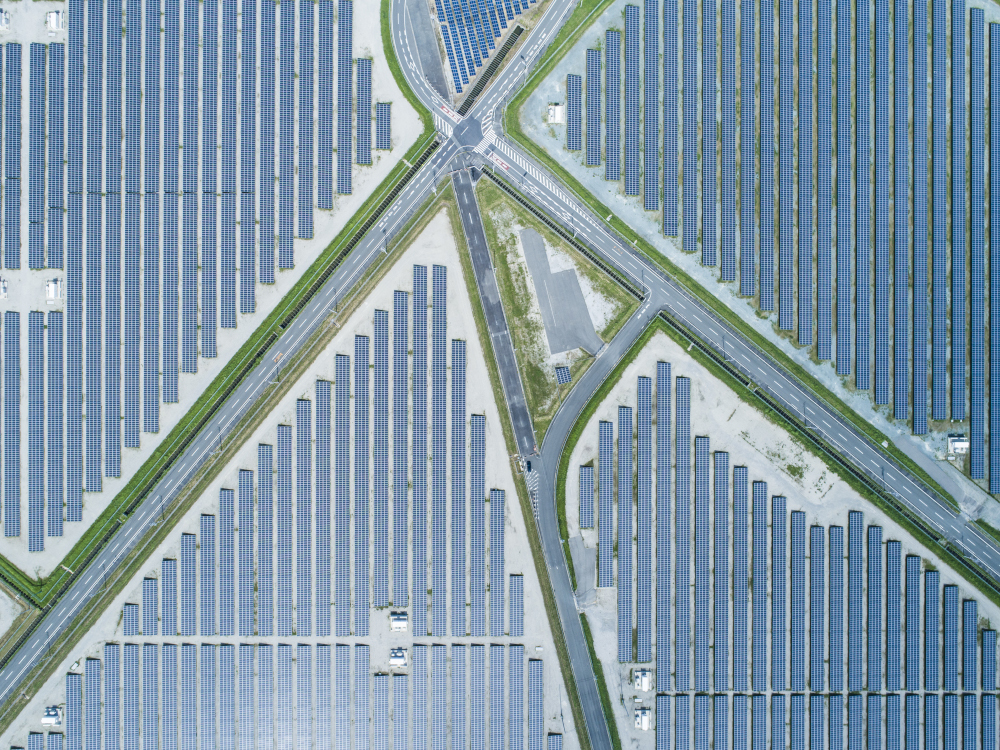News Analysis: The German battery storage opportunity
Brookfield-owned renewable energy developer X-Elio last month announced one of the largest deals in the utility-scale German battery storage to date, agreeing with other investors to finance the development and construction of a 6 GW pipeline of batteries in Germany owned by battery developer Eco Stor.
The deal signifies that EQT-backed renewables developer Tion’s purchase of its first German battery last December wasn’t a one-off: big managers are now targeting German batteries for the first time.
Other large players have also entered the market with French energy giant TotalEnergies in recent days buying Munich-based Kyon Energy, which is developing some 7 GW of batteries. Sources say the oil giant is looking to connect some of the batteries to its offshore wind assets. TotalEnergies did not respond to a request for comment.
Infrastructure funds managers have done utility-scale battery deals in Germany in the past, including Swiss Life Asset Managers, Obton, Reichmuth, Encavis, Gore Street and Demeter Partners, but entries by the likes of Brookfield suggest the market is on an upward trajectory.
But while Germany’s BESS market is finally starting to heat up, it remains nascent. Fewer than 20 investors have bought or begun developing a battery in Germany, according to Infralogic data. As of last month, 200 large-scale BESS systems have been installed overall, including by utilities, infrastructure investors and other developers, according to data compiled by the ISEA Institute at RWTH Aachen University. Overall, around 1.5 GWh of large-scale BESS projects are operational in Germany, the data shows.
In contrast, the UK, Europe’s market leader, has some 3.5 GW of operational capacity, according to NGO RenewableUK. While just 12 privately financed deals have been completed in Germany, some 160 of such deals worth some EUR 8bn have reached financial close, according to Infralogic data. Modo Energy previously estimated that 10 GW of batteries could be operational in the UK within two years.
Also, whereas in the UK there are scores of battery projects in development with a capacity in the hundreds of megawatts, and even some in the gigawatts, like Carlton Power’s 1 GW battery storage system in Greater Manchester, in Germany the scale is smaller, with only several battery projects registering over 100 MW, according to Infralogic data.
The UK has become highly saturated, with revenues from frequency response services declining as more batteries come online, according to some UK investors. Others such as Gresham House have reported losses from their assets. But in Germany – which sources agree is several years behind the UK, where capacity markets for batteries were introduced in 2020 – the market is ripe for investment.
There are fewer batteries bidding for contracts, so investors can stake their claims over the ancillary and trading markets. But this won’t necessarily last for long. “The FCR market will be saturated rather soon,” a German battery developer says, adding that they are “curious to see whether new investors are equipped to deal” with the fast-changing BESS landscape there.
Returns for German batteries can be attractive. Today, across ancillary services and energy trading, battery owners can achieve on a levered basis double-digits internal rates of return, Eva Zimmerman, an associate at energy data provider Aurora Energy Research says. Brookfield owns X-Elio through Brookfield Infrastructure IV, which has a minimum 10% IRR target.
There are strong tailwinds for investment. Despite not yet being backed by government subsidies, the German storage market is projected to be one of Europe’s fastest-growing: a recent study by consultancy Frontier Economics said that market-driven large-scale storage is forecasted to grow from 1.3 GW now to 15 GW by the end of the decade.
But after the 2022 energy crisis – where prices for battery power in Germany reached their highest ever levels, and even just a 1 MW battery could make hundreds of thousands of euros per year – the question of what areas to target to maximise battery revenues remains a key one.
Investors have a choice between ancillary services – where battery owners are paid for making power capacity available following deviations to the grid, the most common of which is known as frequency containment (FCR) – and the trading of electricity, also known as arbitrage.
FCR involves the provision of power within 15 seconds of a reported power outage, to restore the grid’s usual 50 hertz frequency. The few investors that have entered Germany so far can bid for an abundance of FCR opportunities. Each day, six auctions are held for the purchase of power on the next delivery day, meaning over 150 auctions per month.
According to analysis of FCR revenues by energy market advisor Energy Brainpool, last year annual revenues were little over half of what they were in 2022 (where a 1 MW battery could generate around EUR 180,000) due to the decline in prices following the end of the energy crisis. In 2020, revenues from FCR were less than one-third of those in 2022.
Nonetheless, investors that move now can combine FCR with a second stream of revenue from ancillary services whose importance is projected to grow in the medium to long term. If drops in the national power supply persist after 30 seconds, then FCR is replaced by what is known as automatic frequency restoration reserve (aFRR).
AFRR is procured in 15-minute blocks, meaning much longer usage and demand for the battery than FCR, the battery developer says.
Introduced by the German government in late 2020, aFRR is designed to mitigate the intermittency caused in the grid as its reliance on renewable energy grows. It provides a reserve in the power grid that helps to keep the frequency stable at times when outages last up to multiple hours.
As the addition of more renewables increases grid intermittency, these imbalances are expected to grow in the future, making aFRR increasingly important to battery owners’ revenues, the developer says.
aFRR is different to FCR as it contains two forms of remuneration: one for providing availability of capacity and another for activating it.
Gore Street, another asset manager that has ventured into Germany, in a report last year said that it has secured prequalification in the aFRR market for its 22 MW Cremzow asset, acquired from Enel Green Power in March 2022. Because of this, it will see an additional stream of revenues from aFRR this fiscal year.
On top of ancillary services, battery owners drive revenue through arbitrage – charging the battery when prices are cheap, such as at night, and discharging the battery during peak load times.
Last year, for the first time arbitrage represented the highest source of revenue for batteries, although estimated at around two-thirds of what equivalent revenues were in 2022 (EUR 100,000 per MW of power per year compared to EUR 150,000) due to the decrease in energy prices following the end of the crisis.
In arbitrage, investors can therefore make huge spreads on the sale of a battery’s power, the battery developer says. Germany’s electricity market is not split into different price regions for north and south, meaning investors can profit from exploiting imbalance and volatility, for instance powering up when excessive renewable power in the north has driven down prices, and selling it when demand from consumers and businesses is highest, in the early morning hours.
Maximising revenues from arbitrage is much more challenging now than it was two years ago, Zimmerman says. “In 2022, you even made a lot of money with an unsophisticated strategy”. But now, it is much more important for investors to know the best times to buy and sell battery power. To do so, they must rely on algorithmic trading companies – and suck up the fees they charge.
As the impacts of climate change and geopolitical unrest continue to cast this decade in an uncertain light, these trading companies’ algorithms – which make calculations using billions of datapoints, including historical forecasts, wind speed, PV capacity, grid load, the last 10 traded megawatts of power, and so on – are increasingly important to BESS revenues, sources agree.
There is not a uniform model for how this service is contracted. A common approach is the floor-based model, whereby the trader pays a fixed sum of around EUR 20 per KWh for ownership of a battery while revenues above this are shared between the two parties. From a floor structure, investors can get a long-term, minimum agreed revenue for the battery, which makes it behave more like a core infrastructure asset, the asset manager specialising in batteries says.
But for most infrastructure funds, this gives away too much of the upside from investing in the asset class in the first place – particularly if a future disturbance to the grid caused by a prolonged extreme weather event causes electricity price spikes like those seen two years ago.
But trading batteries provides fairly foreseeable revenues, meaning projects can raise more leverage and increase their leverage in the process. Gore Street recently said it appointed Austria-based Enspired Trading to optimise its Cremzow asset. Between January and September last year the battery generated around GBP 849,000 of revenues, a number which Gore Street admits was impacted by the battery’s lack of availability due to extended lead times for required spare parts.
But even if investors hire a trader to help optimise BESS revenues across FCR, arbitrage and aFRR, banks may still show higher reluctance to provide financing support. They are more confident in the UK, where the market is several years ahead and credit committees are more familiar with the different types of funding models, sources agree.
According to Infralogic data, only a handful of German battery storage financings have taken place over recent years, with notably just one greenfield transaction, involving Berenberg’s Green Energy Junior Debt Fund providing a subordinated promissory note and senior financing for a 28 MW BESS portfolio across Saxony and Saxony-Anhalt.
This year possibly saw the largest debt deal to date, involving the refinancing by Swiss Life Asset Management-backed BCP Battery Holding of its 125 MW German battery portfolio, although details on the deal value and lenders were not disclosed.
Lenders are cautious due to the lack of any straightforward political support for BESS in Germany, Zimmerman says. Because the German market is several years behind the UK’s, without any subsidy framework in place, the variable and unsecured nature of battery revenues makes credit committees less comfortable with the asset class.
At some point, banks will start to assume more risk, as they grow more comfortable with different business models. But for investors looking to scale up their portfolios with financing, it is not yet the right time in Germany to do this.
More certainty is expected, however. Discussions are underway about potential changes to German battery revenues, driven by an announcement in February that the government intends to include BESS within a new “capacity mechanism”.
Based on earlier studies completed by Aurora, Zimmerman estimates that the capacity market could make up around 7% of BESS revenue for a two-hour system. The final figure would depend on various factors including the battery’s derating factor and clearing price. Regardless, “it is safe to say that capacity market remuneration will not be the single major revenue source”.
But the arrival of government support and the security of revenues provided through battery subsidies could be the missing link needed to convince lenders to adopt larger-scale financing packages, as they have done in the UK.
It is hard to say yet how the capacity mechanism could change the investment outcome for BESS, but investors needn’t worry about this yet. It is “too far in the future at the moment” to have a large influence on current valuations and business cases, the developer says.
| Investments by asset managers in German BESS | ||||
| Transaction Name | Type | MW | Sponsor/Acquirer | Date |
| Eco Stor Investment (2024) | M&A | 6000 | X-Elio (Brookfield), Nature Infrastructure Capital, Å Energi | 19 Feb 2024 |
| Thuringia 10MW Battery Project Sale (90% Stake) (2023) | M&A | 10 | Tion Renewables (EQT Infrastructure) | 28 Dec 2023 |
| Alfeld 137.5MW Battery Storage Plant Sale (2023) | M&A | 137.5 | Obton | 5 Dec 2023 |
| Arzberg 100MW Battery Storage Plant | Greenfield | 100 | Reichmuth Infrastructure/MW Storage | 28 Nov 2023 |
| Hettstedt 12MW Battery Storage Facility | Greenfield | 12 | Encavis | 30 Aug 2023 |
| Hettstedt 12MW Battery Storage Facility Sale (2023) | M&A | 12 | Encavis | 30 Aug 2023 |
| BCP Battery Holding Battery Portfolio Acquisition (2022) | M&A | BCP Battery Holding (Swiss Life Asset Managers) | 22 Dec 2022 | |
| Eisenach 68MW Battery Storage Acquisition (2022) | M&A | 68 | Swiss Life Asset Managers | 28 Jun 2022 |
| Cremzow 22MW Battery Facility 90% Stake Sale (2022) | M&A | 22 | Gore Street Energy Storage Fund | 4 Mar 2022 |
| German 20MW EV Battery Storage System (2019) | Greenfield | 20 | Fonds de Modernisation Ecologique des Transports (FMET), Renault, The Mobility House, Mitsui & Co | 2 Sep 2019 |
| Source: Infralogic | ||||
As the government increases its focus on regulating the sector, it may also opt to split the German electricity grid into north and south pricing zones, offering a higher wholesale price for electricity to battery owners in south Germany than in the north. This would promote newbuild BESS projects in southern Germany, where there is more demand for power, to rebalance the renewable-powered north, says Lars Stephan, a senior policy manager at US energy storage specialist Fluence based in Berlin.
Among the potential negative consequences of this is limitations on the ability of investors to manipulate the arbitrage markets. But sources agree that investors would accept potential regulations on revenues in return for the increase in revenue certainty.
It is still early days, but the signs for a BESS capacity market in Germany are optimistic. “In most European countries the capacity markets have turned out quite beneficial for battery storage, so it is likely that it will be in Germany as well,” Zimmerman says.
Already, this year has seen two large-scale BESS investments in Germany, and more are set to follow as news of the potential spoils spreads. This also means that within a few years, the German BESS market could become more heavily saturated, so those investors willing to bet on this nascent sector should act now in order to gain a foothold before the landscape becomes more crowded.











